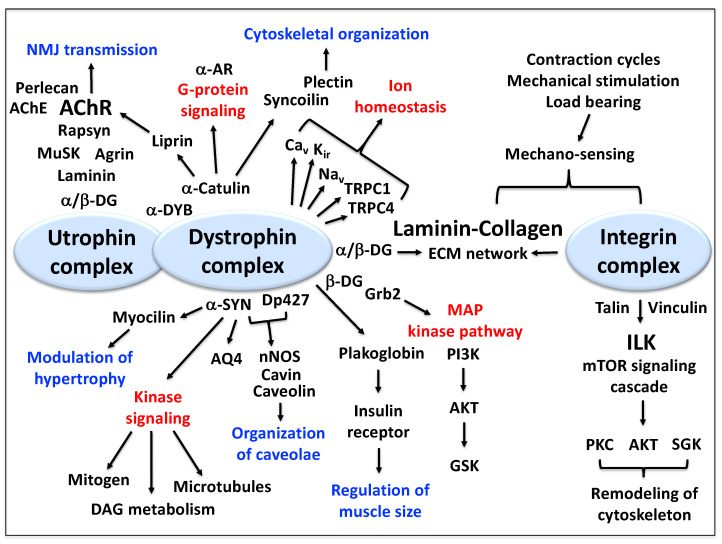Figure 5.
Overview of the function of the dystrophin complexome as a cellular signaling hub at the sarcolemma of skeletal muscle fibers. Shown is the close neighborhood relationship between the dystrophin core complex and the integrin complex within the plasma membrane, as well as the presence of the dystrophin and utrophin complex at the neuromuscular junction. Key pathways and functional results that are potentially linked to dystrophin are marked in red and blue, respectively. Abbreviations used: AChE, acetylcholinesterase; AChR, acetylcholine receptor; AKT, serine/threonine-specific protein kinase B; AQ4, aquaporin water channel; AR, adrenergic receptor; Cav, voltage-sensing L-type Ca2+-channel; DAG, diacylglycerol; DG, dystroglycan; Dp427, dystrophin protein of 427 kDa; DYB, dystrobrevin; ECM, extracellular matrix; Grb2, growth factor receptor-bound protein 2; GSK, glycogen synthase kinase; ILK, integrin-linked kinase; Kir, inward rectifier K+-channel; MAP, mitogen-activated protein; mTOR, mammalian/mechanistic target of rapamycin; MuSK, muscle-specific kinase; Nav, Na+-channel; NMJ, neuromuscular junction; nNOS, neuronal isoform of nitric oxide synthase; PI3K, phosphoinositide 3-kinase; PKC, protein kinase C; SGK, serine/threonine-protein kinase; SYN, syntrophin; TRPC, transient receptor potential cation channel.

